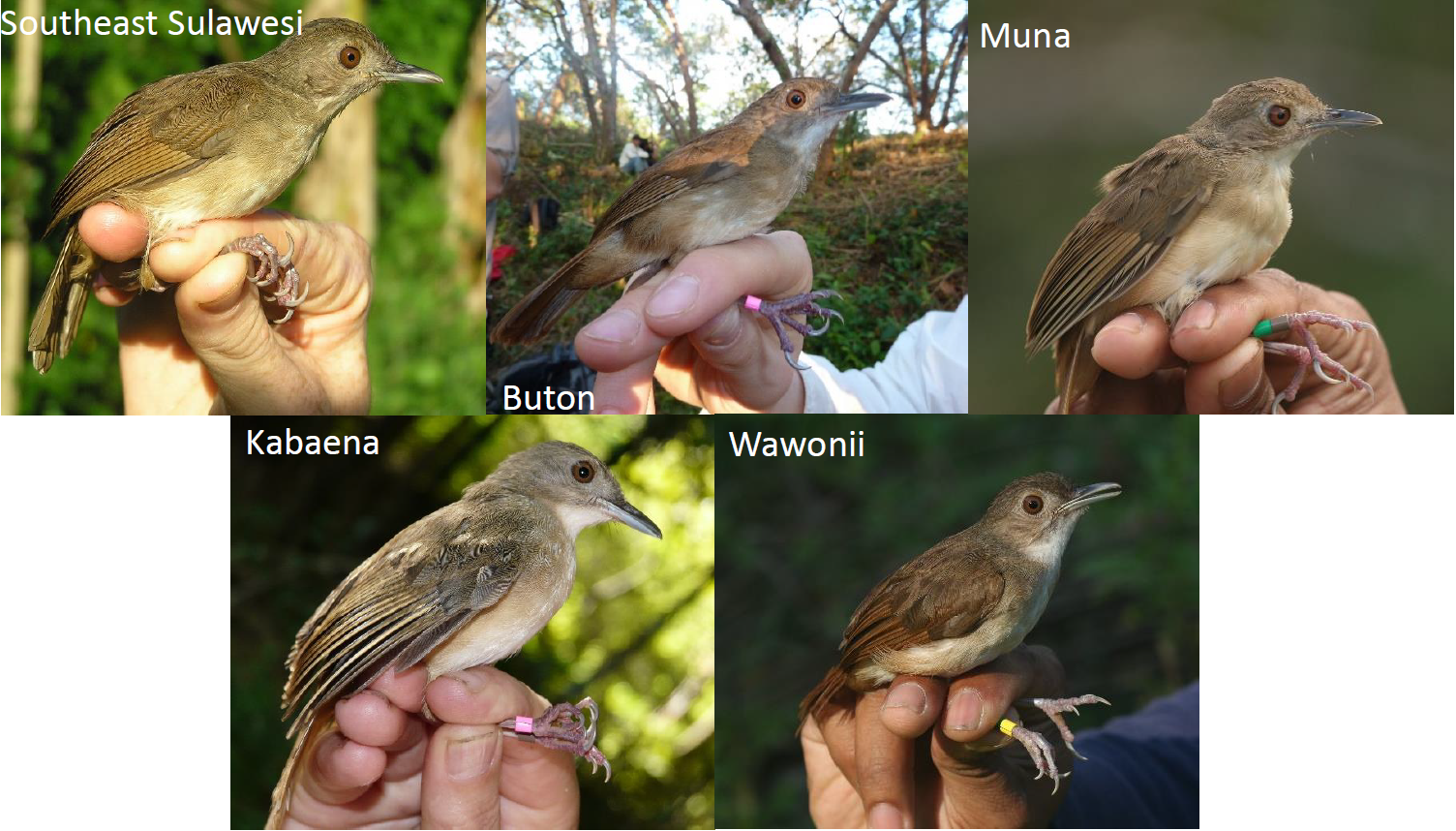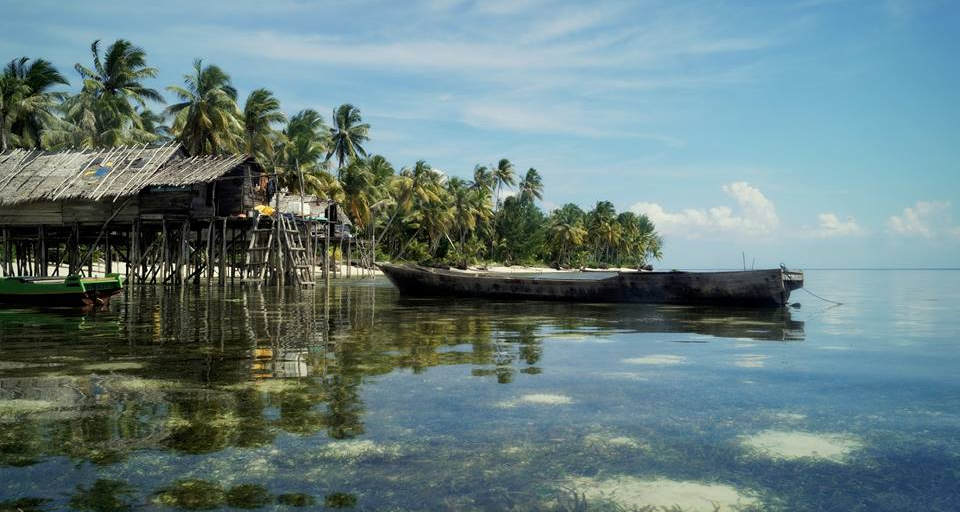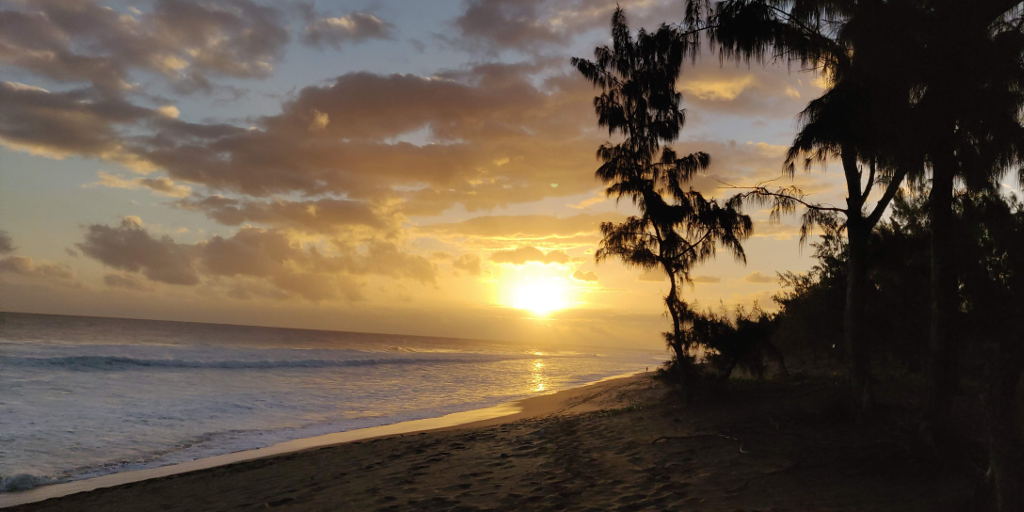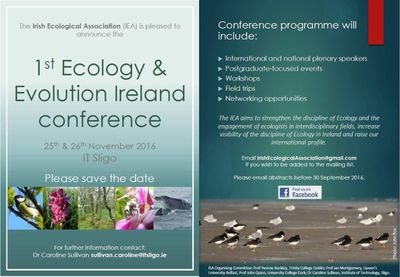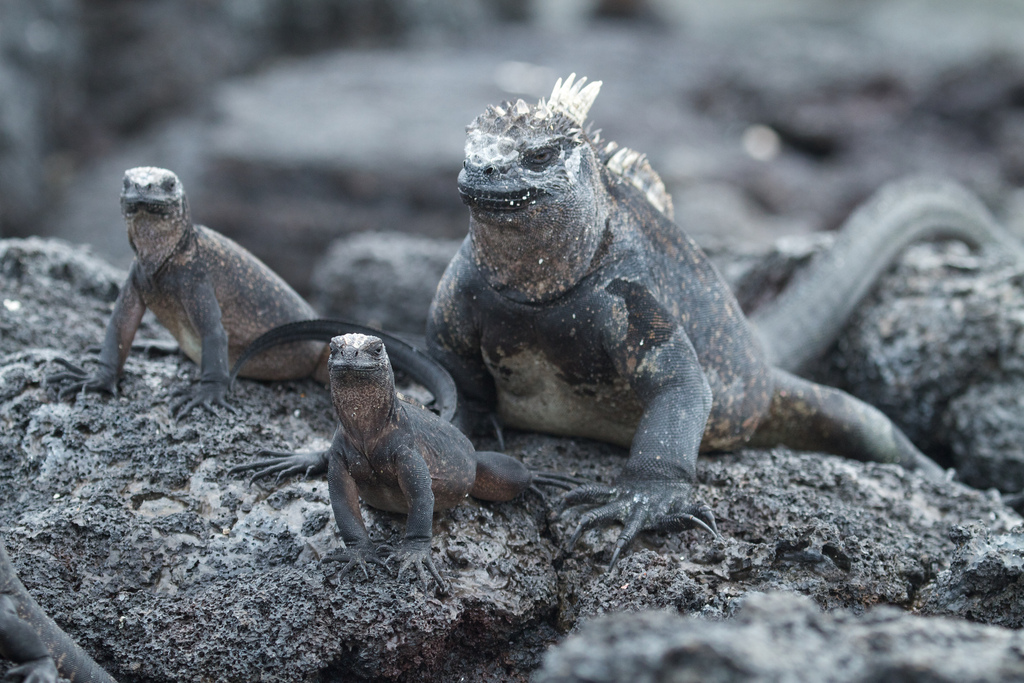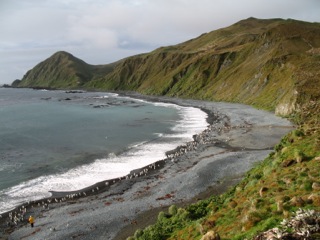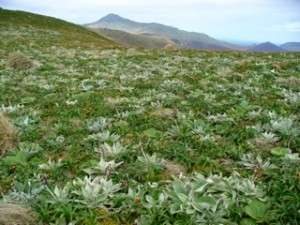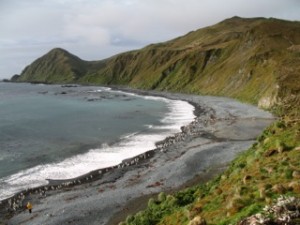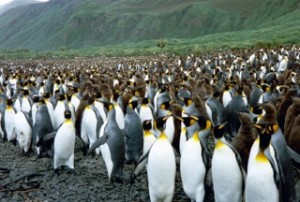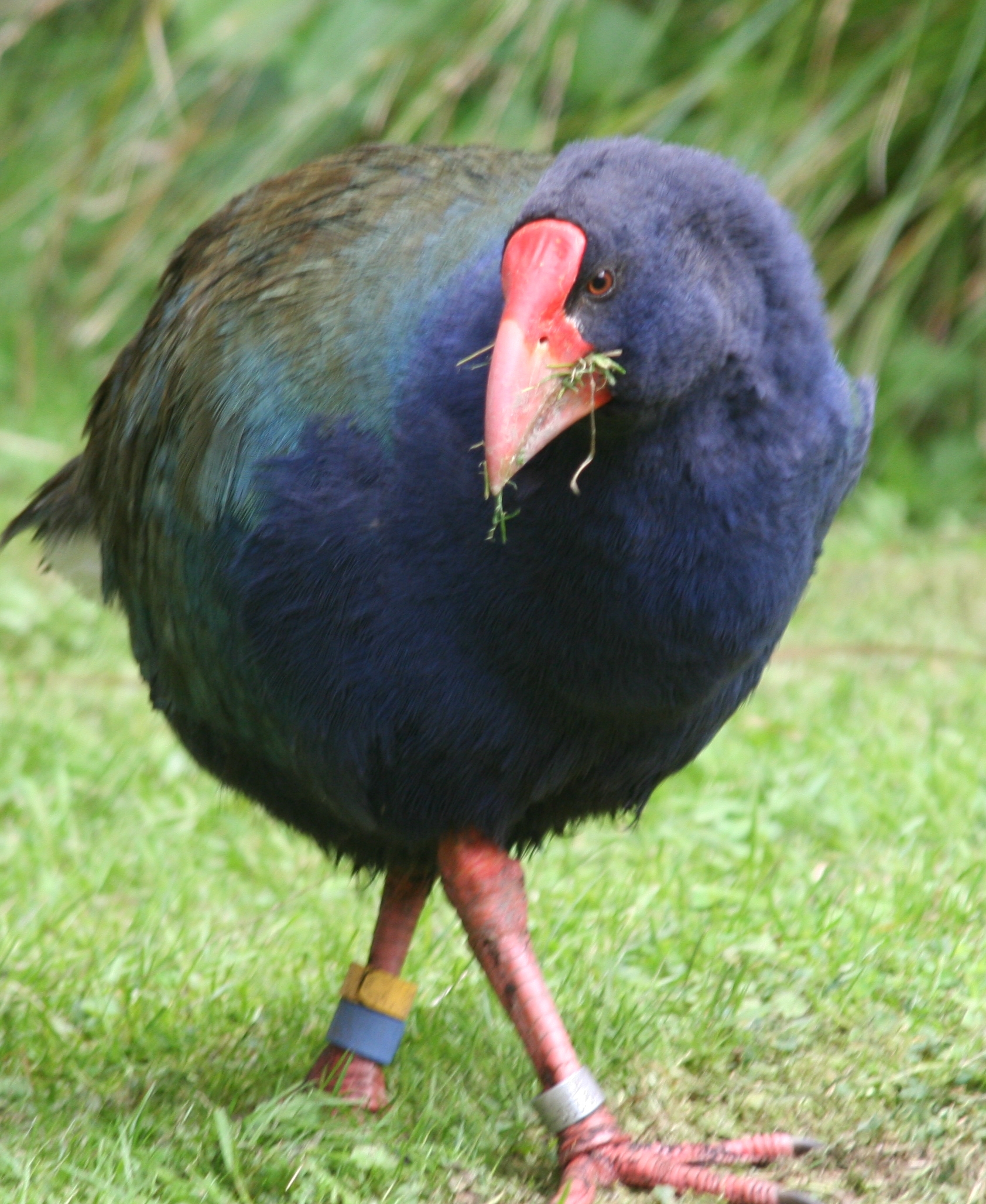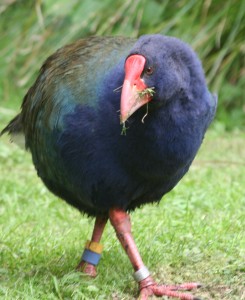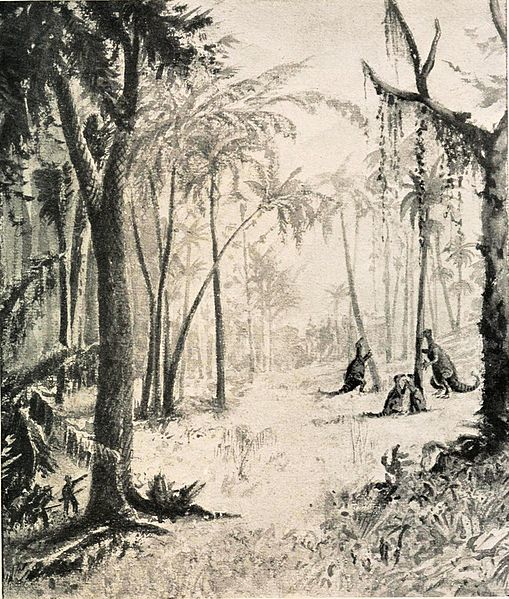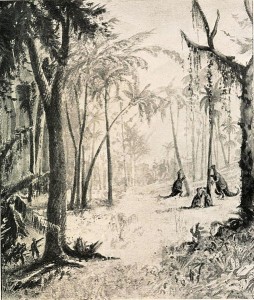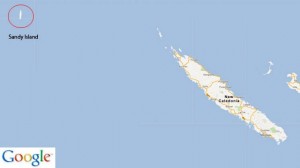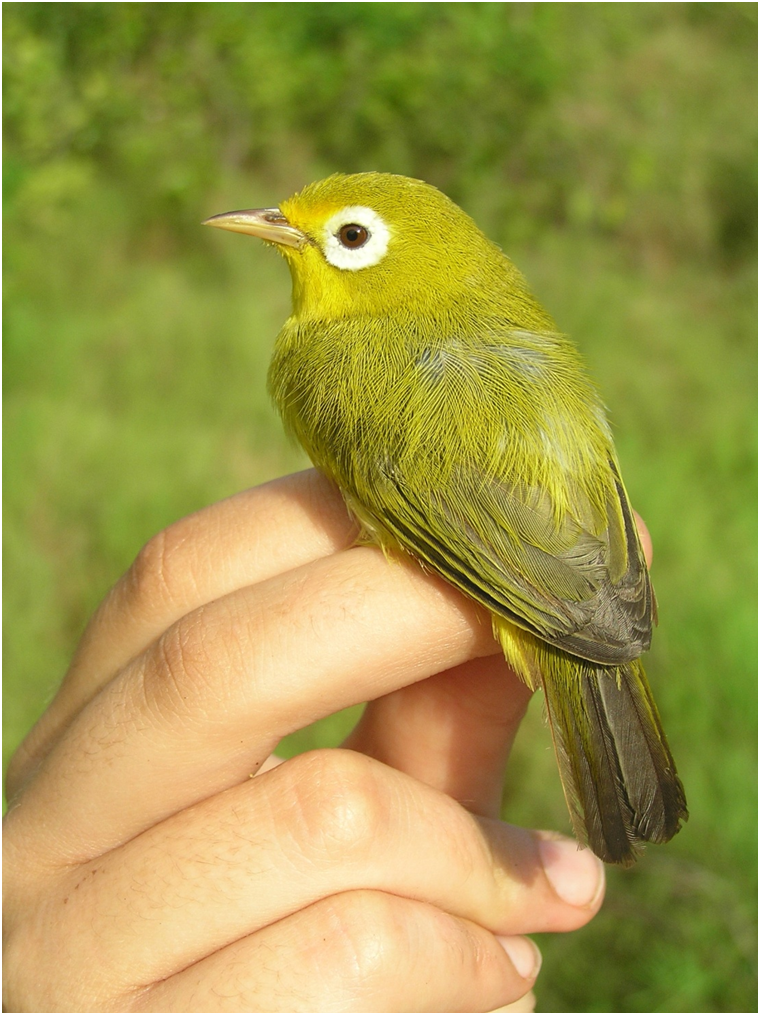What is the first image that comes to mind when you think of evolution? Possibly a line of cartoon primates marching, slouching monkeys at one end and naked men with spears at the other. Or a branching tree diagram where each twig represents an organism, maybe with a tentative “I think” scribbled above it. Alternatively, you may have pictured an illustration of related birds from isolated islands, each showing a dramatically different bill shape adapted to a different diet. Darwin’s Galápagos finches represent a foundational influence in terms of where we tend to look for signs of evolution and what we expect these signs to look like. Our new paper, just published Open Access in Zoologischer Anzeiger: A Journal of Comparative Zoology, provides a contrasting image. We looked at the Sulawesi babbler (Pellorneum celebense), a dull brown bird that spends its time hiding in bushes on less isolated islands in Indonesia, looking pretty similar from one island to the next. Nevertheless, we found that several of its populations are quite different from one another in mitochondrial DNA, in morphology, and in song.
Continue reading “Evolution in the understorey”Surveying birds on an unexplored tropical island – the TCD/Opwall expedition to Menui, South-east Sulawesi, Indonesia.
A big draw for those who study the natural world is the search for adventure – the chance to make a novel discovery, and to explore regions unknown to science. Despite that, in today’s world, such an opportunity rarely presents itself, and it is exceedingly rare to truly break new ground. However, in the summer of 2017 circumstances allowed a team of scientists from Trinity College Dublin (TCD), Halu Oleo University (UHO) and Operation Wallacea (Opwall) to venture to the remote, and scientifically unknown, Menui Island, in South-east Sulawesi, Indonesia. The expedition’s motive was to provide an account of the bird species present and their associating habitats. Our survey work, published in the latest issue of Forktail, found the island to be home to a unique avifauna and several important habitats, though these face serious threats from over-exploitation.
Continue reading “Surveying birds on an unexplored tropical island – the TCD/Opwall expedition to Menui, South-east Sulawesi, Indonesia.”A Happy Réunion at the Island Biology Conference 2019
Island biologists often work in beautiful and interesting places. It seems only fitting that when they meet up to discuss their work, they do it somewhere like Réunion, a volcanic oceanic island in the Indian Ocean, administered as a French department and the site of the 2019 Island Biology conference. Armed with my Junior Cert level French, I made the journey to discuss my PhD project on the birds of Sulawesi and the work of the TCD Biogeography Working Group.
Continue reading “A Happy Réunion at the Island Biology Conference 2019”Ecology & Science in Ireland: the inaugural meeting of the Irish Ecological Association
In the years to come, 140 ecologists working in Ireland will look back with fond memories of being part of the inaugural meeting of the Irish Ecological Association (24th-26th November). We will remember hard-hitting plenaries, compelling oral presentations, data-rich posters, influential workshops and the formation of the IEA’s first committee. The lively social events might be harder for some of us to remember… Continue reading “Ecology & Science in Ireland: the inaugural meeting of the Irish Ecological Association”
Iguana vs Snakes | Planet Earth 2
Most of us were glued to the hugely anticipated premier of Planet Earth 2 this Sunday. We watched lovesick sloths meander through the mangroves, giant dragons battle it out on Komodo, and penguins getting fecked off cliffs by monstrous waves.
But if there was one scene that got us talking more than any other it was the literal race for survival that took place between a newly hatched marine iguana and an ominous pack of southern black racer snakes. The baby iguana had us shouting at the telly and clutching our faces while we watched its mad dash to the freedom of the ocean’s edge, avoiding the snakes’ fangs.
A racer snake gauntlet stands between hatchling iguanas and the safety of the sea! #PlanetEarth2 pic.twitter.com/LkFiEB30IJ
— BBC Earth (@BBCEarth) November 6, 2016
While we hoped against hope that the hatchling would make it, David Attenborough reminded us that for the snakes this was also a matter of life and death. Snakes have to eat, and for them the iguana hatching season means their best chance all year for hunting food. Continue reading “Iguana vs Snakes | Planet Earth 2”
How Do We Solve A Problem Like Invasive Species?
There are many threats to our environmental security: climate change, habitat loss and degradation, pollution. All are damaging the environment and impacting on our long-term survival. One threat that seems to have been often overlooked by the public, however, is the effect of invasive species.
Invasive species are non-native species that adversely affect the invaded region. Not every non-native species becomes invasive: some fail to establish while others may establish but at sufficiently low population densities to have minimal impact on their new home. But a few species will find themselves so at home in their new land that their populations explode and, due to a lack of any predators adapted to deal with them, their populations remain unchecked.
There are many famous examples of invasive species: the Burmese python in Florida, rabbits and cane toads in Australia, the grey squirrel in the UK and Ireland. Attempts to control all these species have been made over the years, though none have successfully managed to completely eradicate them.
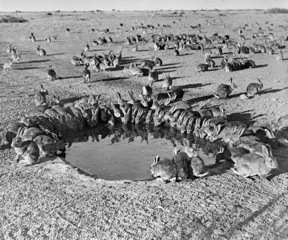
While much of the media is focused on local invasive species, the greatest impacts are often found not in large inhabited countries but on small, isolated islands. You may be wondering how invasive species can reach small, isolated islands but humankind’s reach has been vast and in the days of shipwrecks and long voyages sailors often found themselves on shores never-before touched by man. When they came ashore so too did stowaways in the form of rats. Some species were even purposefully introduced in order to provide food for victims of shipwrecks. In these ways species including rats, cats, rabbits, pigs, sheep and reindeer have found their way to islands all around the world, including those in the sub-Antarctic.
The impacts of these species have been great and varied. Many islands are home to ground-nesting seabirds and their eggs and chicks are extremely vulnerable to predation by rats and cats while their nesting sites can be damaged by rabbits and larger mammals. Grazing also impacts on the islands, leading to habitat loss and soil erosion. As seabird numbers have fallen due to interactions with fishing gear, harvesting for food and though the effects of invasive species on their breeding success, attempts have been made to rid islands of these now unwelcome interlopers.
The effects have been mixed. Some attempts have been hugely successful. The most successful is arguably that of Campbell Island, a sub-Antarctic island south of New Zealand. It had a succession of eradications starting in the 1980s that culminated in the early 2000s with the eradication of rats across the entirety of its 113 square kilometres. This was at the time the largest area ever cleared of rats. I remember being told by a lecturer, though this may be apocryphal, that there was a conference going on at the time where people were explaining why it was impossible to eradicate rats from large islands at the very same time that this eradication programme was coming to a successful close.
Some attempts have not been so successful and they highlight the importance of good management and understanding of food web interactions. I believe, or at least I certainly hope, that the following example is the most extreme case to date. Without further ado, I present to you the case of Macquarie Island.
Macquarie Island is a sub-Antarctic island between Australia and New Zealand. It is home to elephant seals, three species of fur seal and thirteen species of seabirds including penguins, petrels and albatrosses. Rats, mice and cats were introduced by sealers in the early 1800s and rabbits were introduced in the 1870s. Both the cats and the rabbits have had devastating impacts on the seabird colonies. Rabbits caused erosion through their burrowing and cropping of the vegetation while the rats ate young chicks. The combination of predation and habitat destruction are thought to be responsible for extinction of the two endemic species on the island, the Macquarie Island parakeet and the Macquarie Island rail.
By the 1980s the habitat destruction was becoming significant and a decision was made to control the rabbits through the introduction of myxomatosis which decimated the rabbit population. This had an unexpected impact on the cats: it turned out the cats had been predating on the rabbits and used them as their main food source so when the rabbits disappeared the cats turned their attention to seabird chicks. Once this was realised the need to control the cat population was quickly recognised.
A cat eradication programme began in 1985 and by 1999 the last cat on the island was killed. You would be forgiven for thinking that this is the end of the story: rabbits controlled, cats switched their diet, the mistake is recognised, cats are controlled, and now the seabirds can live happily ever after. . . If only it were that simple.
The rabbit population began to re-establish itself. It increased rapidly and by 2006 was back to pre-control levels. The rabbits were devastating the island In 2006 a large landslip, caused by erosion by rabbits, partly destroyed a penguin colony.
It was clear that something had to be done and in 2007 the Australian Government announced their intention to eradicate Macquarie of invasive rabbits and rodents (rats and mice) at a cost of A$25 million. The need for this eradication was highlighted in a 2009 paper by Dana Bergstrom and colleagues from the Australian Antarctic Division. They showed the full effects of the cat eradication programme on the rabbit population and the terrible consequences to the vegetation of the island. Their report highlighted the need for integrated eradication programmes that examine the whole ecosystem and predict and plan for unintended consequences of the removal of invasive species.
The story could have ended there, a costly mistake both in ecological and economic terms. It is where the story ended for me until I started researching this piece. It turns out that there is a surprisingly happy ending as earlier this month the Australian and Tasmanian governments announced that Macquarie was officially pest free following the success of their eradication programme. This success means that Macquarie now beats Campbell Island as the largest island cleared of pests, an achievement that is of global significance. It’s an incredible feat, one I feared would be impossible. Though it will still take time for Macquarie to fully recover from the effects of more than 200 years of alien inhabitants, it now has that time. Finally Macquarie is home only to the birds and seals; a sub-Antarctic paradise has been restored.
Author: Sarah Hearne, hearnes[at]tcd.ie, @SarahVHearne
Images: Wikicommons
When Perseverance Pays Off
The history of science is, as the name suggests, the study of the historical side of science: the people, the process and the development of the knowledge and techniques that have made science the dominating force it is today. In popular culture the history of science is often told through individuals: the mavericks and geniuses so singular that only they could see the right path to take. The problem with this approach is that it does a mis-service to the hundreds and thousands of people who have worked so tirelessly to make the incremental advances in knowledge that accumulate until the snowball has built into an avalanche and the paradigm is ready to be shifted by whoever is lucky enough to see the pivot first (to hideously mix my metaphors).
Yet there are times when the ‘maverick’ status is not unwarranted. Often the term is used pejoratively to describe someone who will not let go of an idea long-since disproved. But on occasion there are people for whom the inability to give up pays off; and it’s one such person I wish to discuss here today.
The set-up: Otago, South Island, New Zealand, early 1910s. A boy stands in the local museum looking at an old black and white photo of a bird. This bird is unlike any he’s seen. It looks like a pukeko (a large moorhen-like bird) but it is maybe twice the size and three-times the bulk. It has a sharp yet heavy bill that takes up the entire front of the face; a stocky neck and strong bare legs. The legs and bill are the same colour but differ from the dark body. The feathers show signs of different colours on the back and wings though the black and white makes it difficult to be certain. The boy stares, enraptured, and looks at the label: Notornis (Maori: Takahe; Porphyrio hochstetteri): Extinct.
The boy was Geoffrey Orbell, and despite being told (probably repeatedly) that the takahē was extinct and had been since the 1890s, he continued to believe that they were still out there, hiding. Fiordland, the area where takahē were last seen alive, was still relatively unexplored and the mountains and valleys could easily hide a small population, or so Doc (as he was nicknamed due to his medical degree) believed. With a small group of friends he spent his free time tramping through the Murchison Mountains in search of the elusive (and supposedly extinct) bird.
I don’t know how long he searched, how many miles he tramped, how many friends he bored and how many false hopes he had dashed. But I do know that in 1948 he did what no one thought possible: he found a population of living takahē (the name now commonly used).
The discovery caused an immediate reaction and for a while Dr Orbell and his friends were international stars. Scientists hiked to the valley where the takahē had been found and, unusually for the time, recognised the importance of the discovery. Efforts to protect the birds were rapidly put in place. In a news report from 1950 (well worth watching for voice-over and musical accompaniment if nothing else) the population was estimated at 10 breeding pairs, yet this may have been an underestimate as the population was said to reach a low in 1982 of 118 birds.
Until the 1980s the takahē were largely left in peace but a steep decline in population numbers forced the New Zealand Department of Conservation (DOC) to step in. A captive breeding programme combined with translocation to predator-free reserves increased the population to 263 at the beginning of this year. This may not seem impressive for 30 years of active conservation but takahē, in common with many of New Zealand’s endangered birds, are classic K-selected species meaning they live a long time, are slow to reach maturity and have few offspring over the course of their lives.
Predatory rodents that prey on eggs and chicks and inbreeding depression are the main factors that hinder more rapid population growth. Luckily New Zealand has recovery strategies for many of their endangered species which involve the use of predator-free islands and mainland reserves. While little can be done to improve the genetic diversity, strenuous efforts are made to maintain it through closely monitored breeding programmes.
Takahē may not be completely safe from extinction, without active conservation they would almost certainly be extinct. If it were not for Dr Orbell and his passion and determination in the face of almost certain defeat it is highly likely that the takahē would have died out, high up in the mountains and with no one to mourn their loss.
Dr Geoffrey Orbell was an ear, nose, throat and eye doctor whose search for the takahē was just one part of his long and fascinating life. He died in 2007 at the age of 98 and was born on October 7th 1908. Happy Birthday Geoffrey!
Author:
Sarah Hearne; hearnes[at]tcd.ie, @SarahVHearne
Photo Source:
Wikicommons
The Perks of Zoology; Field Work in the Greek Islands
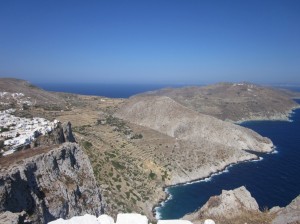
One of the many things I love about Zoology is the opportunity to work away from a desk. As an undergraduate I enjoyed field courses and summer projects in the not so exotic wilds of Ireland and Cambridgeshire – great experiences but not quite a match for the glamour of the recent TCD trip to Kenya! Last summer, however, I was fortunate enough to expand my zoological horizons by working as a field assistant in the Greek Islands.
I travelled to the remote island of Folegandros, one of the quieter tourist destinations in the Cyclades, to assist Kate Marshall, a PhD student in Behavioural Ecology at the University of Cambridge (supervised by Dr. Martin Stevens and Professor Nick Davies). Kate’s research focuses on the evolution of morphological and colouration phenotypic divergences in Erhard’s wall lizards (Podarcis erhardii). She is particularly interested in studying the roles of both natural selection (adaptations to avoid predators) and sexual selection (signals to other lizards) in driving the evolution of varied colour patterns in lizard populations on different islands.
Kate is modelling the lizards’ colouration from the perspectives of predators (birds) and conspecifics (other lizards). Some of her early results indicate that P. erhardii populations have evolved colour patterns and behaviours that are locally adapted to different island environments. Dorsal and head colour patterns seem to be well matched to the lizards’ local environments- indicating a possible function in predator avoidance – while the lizards’ sides are brightly coloured and may play roles in conspecific signalling and sexual selection (Fig. 1).
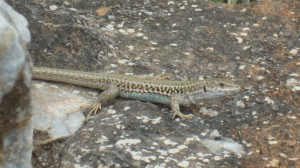
Some of the most enjoyable parts of my time in Greece involved trying out the unusual techniques which form part of Kate’s research methods. For example, I helped her conduct a pilot study to assess whether predator attacks on the lizards might vary in different islands. This involved making 3D lizards out of modelling clay, distributing them across line transects and checking them for signs of predator attacks such as rodent bite marks. The whole process attracted a few curious looks from the locals as we marched through town with boxes of clay lizards! However, these glances were nothing compared to the reactions elicited by our lizard wrangling attempts. Using an extendable fishing rod, dental floss and noose-tying know-how, we patrolled the island’s hiking paths trying to catch unsuspecting sunbathing lizards by slipping the noose around their necks. The technique was successful in some of Kate’s other field sites but unfortunately we had no such luck during my time – just some very confused stares from locals and tourists as we slowly “fished” our way down the mountain side!
I thoroughly enjoyed my time helping out in Greece. The project covers an interesting area of evolutionary biology – studying the often conflicting influences of both natural and sexual selection in driving phenotypic divergences within species. It was also a great learning experience because it gave me an insight into some of the details and challenges involved in planning a PhD before I started my own project. Finally (and perhaps most importantly), it wasn’t all hard work – combining fieldwork with swimming in the clear blue Aegean or afternoons at the beach were just further confirmations that you can’t beat the perks of being a Zoology student!
Author
Sive Finlay: sfinlay[at]tcd.ie
Photo credit
Sive Finlay, K. Marshall
The undiscovered island
Early ecological research relied on adventurous naturalists striking forth into unknown territory and expanding our knowledge of the natural world. This exploratory work is far from complete and many species new to science are still being identified. However, in order to study and investigate the remaining unexplored frontiers, knowing where they are is a fundamental necessity.
Finding our way around has never been so easy. GPS trackers are readily available; Google maps takes the stress out of navigating unfamiliar cities and Google Earth allows us to look down from above on some of the most remote regions of the world. The works of early cartographers with approximations of coastlines and vague “beyond here there are monsters” warnings can be relegated to historical archives. However, a recent discovery by the research vessel Southern Surveyor during its surveys of the seabed off Australia reminds us not to be so trusting of our highfalutin technology.
Sandy Island featured on weather maps and was depicted on Google Earth as lying halfway between Australia and New Caledonia. However, the 24 by 5 kilometre island was not marked on navigation charts. When the Southern Surveyor diverted its course to investigate the supposed island, they found only empty ocean with a depth of about 1.5km. Records of the phantom island seem to trace back to cartographic errors reported by the whaling ship, Velocity, in 1876. The island has now been removed from Google Maps.
From a biodiversity perspective, the non-existent island could have been home to a whole host of unusual and endemic species. The surrounding islands in this region of the South West Pacific are the remaining splinters of Australia’s separation from the ancient super-continent, Gondwana. They have high percentages of endemic species with New Caledonia recognised as one of the 25 global biodiversity hotspots. However, human colonisation of the Pacific islands caused significant biodiversity loss which continues today. If Sandy Island had existed, we can only speculate about the number of weird and wonderful creatures which, in the absence of human threats, could have called the island home.
Inaccurate maps from the 19th Century aren’t that surprising but it is pretty incredible that in our technologically savvy age an island the size of Manhattan just doesn’t exist! One expedition member commented that the mistake “raises all kinds of conspiracy theories” especially when the CIA is one of the contributing sources to the world coastline database.
I guess this is just a reminder that Google is not omnipotent after all!
Author
Sive Finlay: sfinlay[at]tcd.ie
Photo credit
wikimedia commons
Is island life easier?
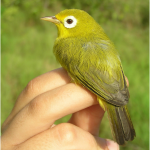
For over 10 years we have been making regular visits to islands in the Sulawesi region of Indonesia. We trap birds on these islands, collecting morphometric data. Each bird we trap is measured, marked with a plastic ring and released. As our dataset grows we gain more insight into the lives of the birds on these islands.
In 2007 and 2010 we visited the island of Kaledupa in the Wakatobi archipelago. In 2010 we made a point of revisiting all of the sites we had trapped at in 2007. This gave us an opportunity to look for the birds we had originally caught in 2007. Continue reading “Is island life easier?”

